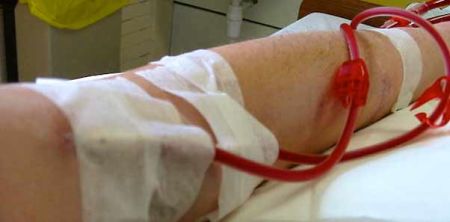Haemodialysis patients at risk for deadly
catheter-related infections experience fewer infections and 68 percent lower
mortality when they received a low dose of antibiotic therapy, compared to the
anticoagulant heparin. The study reporting these results by researchers at the
Henry Ford Health System appears online in the Clinical Journal of the American
Society of Nephrology. It will be published in print in the journal’s July
edition.
Antibiotics Versus Heparin
The standard care for preventing dangerous bloodstream infections in haemodialysis patients is blood-clotting therapy, often in the form of a heparin solution. “Advances in treatment have been elusive over the years,” said Jerry Yee, MD, Henry Ford Health System’s division head of Nephrology and Hypertension. He suggests that the antibiotic therapy used to treat some of the patients in his observational study could be a game-changer in haemodialysis care.
Yee and his fellow researchers conducted a prospective study of 749 patients who received one of two therapeutic solutions during haemodialysis treatment between September 2008 and June 2011. 427 patients received the blood-clotting therapy heparin, and 322 received the antibiotic therapy of gentamicin/citrate. An antibiotic locking technique used to administer the solutions has the double advantage of preventing catheter clotting and reducing infection.
Reduced Mortality and Fewer Infections
The “lock” solution of gentamicin/citrate was found to reduce mortality in haemodialysis patients by 68 percent compared to heparin. Furthermore, the number of bloodstream infections was reduced by 73 percent. Such infections significantly contribute to hospitalisation and death in patients undergoing haemodialysis.
Antibiotic therapy has been known to lower the incidence of catheter-related infections of the bloodstream. The new research has demonstrated for the first time that mortality is reduced as well. Dr. Yee said, “The gentamicin/citrate solution was shown to be both safe and effective.”
Source: Science Direct



























